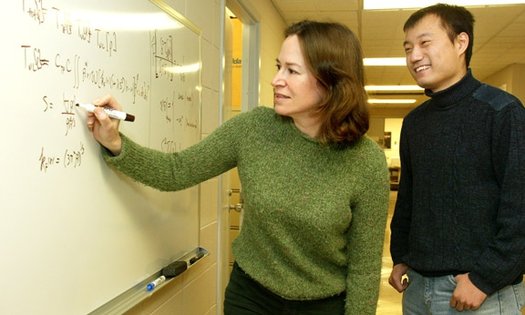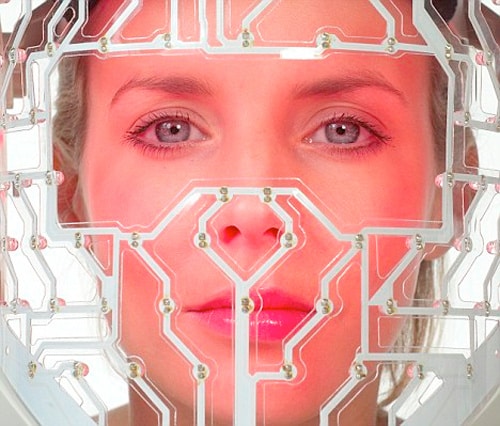The engineers of “School of Engineering and Applied Sciences” of Princeton University have made a breakthrough the development of new materials. They have solved an 80-year-old quandary in quantum physics. This can predict the kinetic energy of electrons in simple metals—and semiconductors—will enable computers to simulate the behavior of new materials up to 100,000 times faster than they currently can and that could make electronic devices smaller and cars more energy efficient.
Quantum Physics Puzzle Solvers Princeton professor Emily Carter and graduate student Chen Huang developed a new way of predicting important properties of substances.
Paul Madden, a chemistry professor and provost of The Queen’s College at Oxford University, who originally introduced Carter to this field of research, described the work as a “significant breakthrough” that could allow researchers to substantially expand the range of materials that can be studied in this manner. “This opens up a new class of material physics problems to realistic simulation,” he said.
Princeton engineer Emily Carter led the project, which took an equation by Llewellyn Hilleth Thomas and Enrico Fermi that calculates how many electrons are distributed in a theoretical gas with evenly distributed electrons and figured out how to apply it to real, imperfect materials.
By reworking a theory first proposed by physicists in the 1920s, the researchers discovered a new way to predict important characteristics of a new material before it’s been created. Llewellyn Hilleth Thomas and Nobel laureate Enrico Fermi first theorized in 1927 that they could calculate the energy of electrons in motion based on how electrons are distributed in a material. Knowing that kinetic energy of electrons in a material helps researchers understand the structure and properties of new materials, as well as how they might respond to physical stress.
But the Thomas-Fermi equation was based on a theoretical gas with electrons distributed evenly, and so it could not work for imperfect real materials. Pierre Hohenberg and Walter Kohn, another Nobel laureate, managed to prove that the Thomas-Fermi equation could apply to real materials in 1964. But they only established the groundwork to prove the equation’s existence.
According to Princeton University News:
“The equation scientists were using before was inefficient and consumed huge amounts of computing power, so we were limited to modeling only a few hundred atoms of a perfect material,” said Emily Carter, the engineering professor who led the project.
“But most materials aren’t perfect,” said Carter, the Arthur W. Marks ’19 Professor of Mechanical and Aerospace Engineering and Applied and Computational Mathematics. “Important properties are actually determined by the flaws, but to understand those you need to look at thousands or tens of thousands of atoms so the defects are included. Using this new equation, we’ve been able to model up to a million atoms, so we get closer to the real properties of a substance.”
By offering a panoramic view of how substances behave in the real world, the theory gives scientists a tool for developing materials that can be used for designing new technologies. Car frames made from lighter, strong metal alloys, for instance, might make vehicles more energy efficient, and smaller, faster electronic devices might be produced using nanowires with diameters tens of thousands of times smaller than that of a human hair.
Carter began working on the problem in 1996 and produced a significant advance with two postdoctoral researchers in 1999, building on Hohenberg and Kohn’s work. She has continued to whittle away at the problem since. “It would be wonderful if a perfect equation that explains all of this would just fall from the sky,” she said. “But that isn’t going to happen, so we’ve kept searching for a practical solution that helps us study materials.”
Carter knew that using the concepts introduced by Thomas and Fermi would be far more efficient, because it would avoid having to process information on the state of each and every electron.
As they worked on the problem, Carter and Chen Huang, a doctoral student in physics, concluded that the key to the puzzle was addressing a disparity observed in Carter’s earlier work. Carter and her group had developed an accurate working model for predicting the kinetic energy of electrons in simple metals. But when they tried to apply the same model to semiconductors — the conductive materials used in modern electronic devices — their predictions were no longer accurate.
“We needed to find out what we were missing that made the results so different between the semiconductors and metals,” Huang said. “Then we realized that metals and semiconductors respond differently to electrical fields. Our model was missing this.”
In the end, Huang said, the solution was a compromise. “By finding an equation that worked for these two types of materials, we found a model that works for a wide range of materials.”
Their new model, published online Jan. 26 in Physical Review B, a journal of the American Physical Society, provides a practical method for predicting the kinetic energy of electrons in semiconductors from only the electron density. The research was funded by the National Science Foundation.
The results of that effort mean that principles of quantum mechanics, previously limited to small bits of matierals, can now be applied on a large scale. Modeling, then, for anything from fuel-efficient cars to electronic devices, will happen exponentially faster than it does today. Innovation just got an upgrade.





Pingback: CleanMemory.com-Computer Repair, Faster Computer
When I look at the physical fitness industry today it is painfully obvious that the industry is more concerned with maximizing specific skills than building better humans. Basically, the fitness industry has been divided into two fields… muscle growth and aerobic ability.
Excellent! Great article, I already saved it to my favourite,
The results of that effort mean that principles of quantum mechanics.
The results of that effort mean that principles of quantum mechanics.
hi, yes it is important to know the quantum nuclies electrons measurment(position) of all the elements on the periodic table before taking steps toward creating a hand held quantum computer.The ELECTRO MAGNETIC field is what is needed to be measured in the milkyway galaxy in light years(example radius-296,730.6654238 field)and apply these numbers to the elements nuclie electron when measuring near absolute zero. These measurments will be a start for the operation for algorthims in the electro magnetic field in a nucleis electrons (ELECTRO- magnetic field)The electrons property has L.E.A.D.S -Light Emitting Anti Diode System.This is a deep field in the quantum operation of an electron.This will allow for the creation of algorithims,if you have a hard drive with inbedded processors with two laser leads firing at two pionts as it rotes (like a record player) they will then exaust one beam to a two gated plates(palasite meterite-like a glass) that are connected with fibre optics will generate a two position electron, they then can contain an algorthim, through the rataing disc,no feed back.TERRY FRASER CALGARY 18 FALMERE WAY,
Can it make more flavory savory fish n chips?
Like pack more lard on people
Or to make lighter materials and charge 50 bagillioon more
Can provide the next century a great math problem
But doesn’t do swat for the proles now
wow then we can of course enjoy a faster computer.
Congratulations!
keep
up the good work